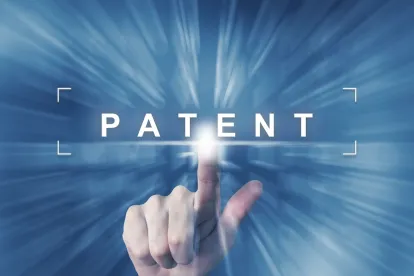The European Commission published its highly anticipated Communication Setting out the EU approach to Standard Essential Patents at the end of 2017, as part of a package to protect Europe’s know-how and innovation leadership (see Commission Press Release Intellectual property: Protecting Europe’s know-how and innovation leadership).
The first section proposes concrete measures to improve the transparency of standard essential patents (SEPs) exposure. Whether or not the proposed measures are useful, it is not clear what impact they will have on the market as there is no legislative force behind them.
The second section, eagerly awaited by competition SEP specialists, deals with the interaction of SEP holders and licensees, and in particular the persistently hot topic of FRAND licensing and SEP enforcement. This section may be disappointing for those who were hoping for guidance on some of the more difficult aspects of SEP licensing terms. While widely debated and lobbied between patent holders and users in the run up to its release, the Communication is silent on two key issues – “use-based licensing” and “licensing to all”.
“Use-based licensing” is the question of whether the price of a licence for an SEP can vary on the basis of the end-use for which it is needed – for instance either in a high value e-car or a lower value connected coffee machine.
“Licensing to all” is the question of whether anyone who asks is entitled to a licence to an SEP, irrespective of where the potential licensee sits in the production chain.
Despite inclusion in drafts circulating in Brussels, both issues were pulled from the final text.
This is perhaps surprising given that, at least on the latter point, two European Commission documents already suggest a preference for “licensing to all”. The Commission’s Guidelines on horizontal agreements indicate at paragraph 285 that in order to avoid competition concerns, a standards organization’s IPR policy “would need to require participants wishing to have their IPR included in the standard to provide an irrevocable commitment in writing to offer to license their essential IPR to all third parties on fair, reasonable and non-discriminatory terms” [emphasis added].
In a similar vein, the Commission’s infringement decision against Motorola(paragraph 294) indicates that manufacturers can reasonably expect that a SEP holder who has made a FRAND commitment “makes its SEPs available on FRAND terms and conditions to all implementers.” [emphasis added]
This does not necessarily mean that failing to license to all third parties is unlawful, but does suggest that a SEP holder who wishes to license selectively may have an uphill struggle in convincing the European Commission’s competition department that this is acceptable.
Instead of taking a position on this, the present Communication merely states that what can be considered FRAND can “differ from sector to sector and over time.”
The Communication refers to national courts’ rulings on SEP enforcement which “provide useful additional guidance for stakeholders” – although the only Member State judgment that actually determines a FRAND rate is not referenced (Unwired Planet v Huawei [2017] EWHC 711 (Pat)).
In any event, given the silence of the Communication on significant issues, the details of SEP enforcement, FRAND and the implementation of the Huawei/ZTE ruling will continue to remain largely in the hands of national courts.
The Communication’s main elements are as follows.
Increasing transparency on SEPs exposure
Standard Developing Organisations’ (SDOs) databases are digesting an ever-increasing number of declared SEPs resulting from self-assessments by patent holders. Usually, there is no scrutiny regarding their actual essentiality. To improve transparency and enable better navigation through the bulk of patents, the Commission suggests in particular:
- To improve quality and accessibility of information recorded
Databases should become searchable based on the relevant standardisation projects and permit updates on patents’ status. Imposing stricter scrutiny on compliance with declaration obligations should ensure their completeness.
- To ensure more up-to-date and precise declarations
Patent holders should update declarations once a standard or a decision on a patent is adopted. Essentiality declarations should include enough information to assess SEP exposure.
- To establish essentiality checks
In order to avoid over-declarations and improve reliability, an independent party with technical capabilities and market recognition should scrutinise essentiality claims.
The Commission proposes a gradual implementation of the new measures, i.e. application to new and key standards only – which will most likely focus on the introduction of 5G in the ICT sector and the development of the Internet of Things (IoT).
The Commission will launch a pilot project in selected technologies with a view to facilitate the introduction of appropriate scrutiny mechanisms. As a possible result, an independent European body may be tasked with SEP essentiality assessments.
FRAND licensing
The Commission limits its guidance on how to determine FRAND values to core principles as follows:
- The economic value of the patented technology is key and should not include any element resulting from the decision to include it in the standard. For technologies developed mainly for the standard with little market value, other factors like relative importance of the technology to the standard compared to other contributions may be considered.
- The present value added of the patented technology should be taken into account. “Present value” refers to the value, discounted to the time of the conclusion of the licence agreement. The market success which is unrelated to the value of the patented technology shall be disregarded.
- Parties need to take account of a “reasonable aggregate rate for the standard.”
- SEP-holders cannot discriminate between “implementers that are ‘similarly situated’.”
- “For products with a global circulation, SEP licences granted on a worldwide basis may contribute to a more efficient approach and therefore can be compatible with FRAND.”
The Commission intends to monitor licensing practices and set up an expert group to deepen expertise on industry licensing practices, IP valuation and FRAND determination.
SEP enforcement
In referring to the CJEU’s judgment in Huawei/ZTE and its implementation by national courts, the Commission focuses its consideration back on the initially identified need for more transparency. The suggested measures may reduce the number of SEPs declared, the response times of SEP users to FRAND offers, support negotiations – and hopes to ultimately reduce the need for litigation.
In order to be able to properly assess a FRAND offer, it shall contain clear explanations on the patent’s essentiality for a standard, the allegedly infringing products, the proposed royalty calculation and the non-discrimination element of FRAND. A counter-offer also needs to be concrete and specific, and may not be limited to contestation and offering a third-party determination of the royalty. If a SEP user provides a security as protection against an injunction, the amount should be fixed at a level that discourages patent hold-out strategies.
The Commission emphasises the importance of good faith negotiations between SEP holders and potential licensees, and stresses the need for proportionality in injunction proceedings. Good-faith users may not be threatened into accepting non-FRAND licensing terms.
Finally, a SEP holder cannot require a licensee to accept a licence for other, non-SEPs on top of the necessary SEPs. Correspondingly, a FRAND-counteroffer needs to be related to all SEPs that a licensee needs but may not be based on individual patents only.
The Commission further intends to promote ADR mechanisms and is currently, together with EUIPO, mapping IP mediation and arbitration tools.
The Communication may be a starting point to end complex EU patent wars, but negotiations and interpretation will continue to heavily fall within the task of antitrust practitioners and national courts.






 />i
/>i

